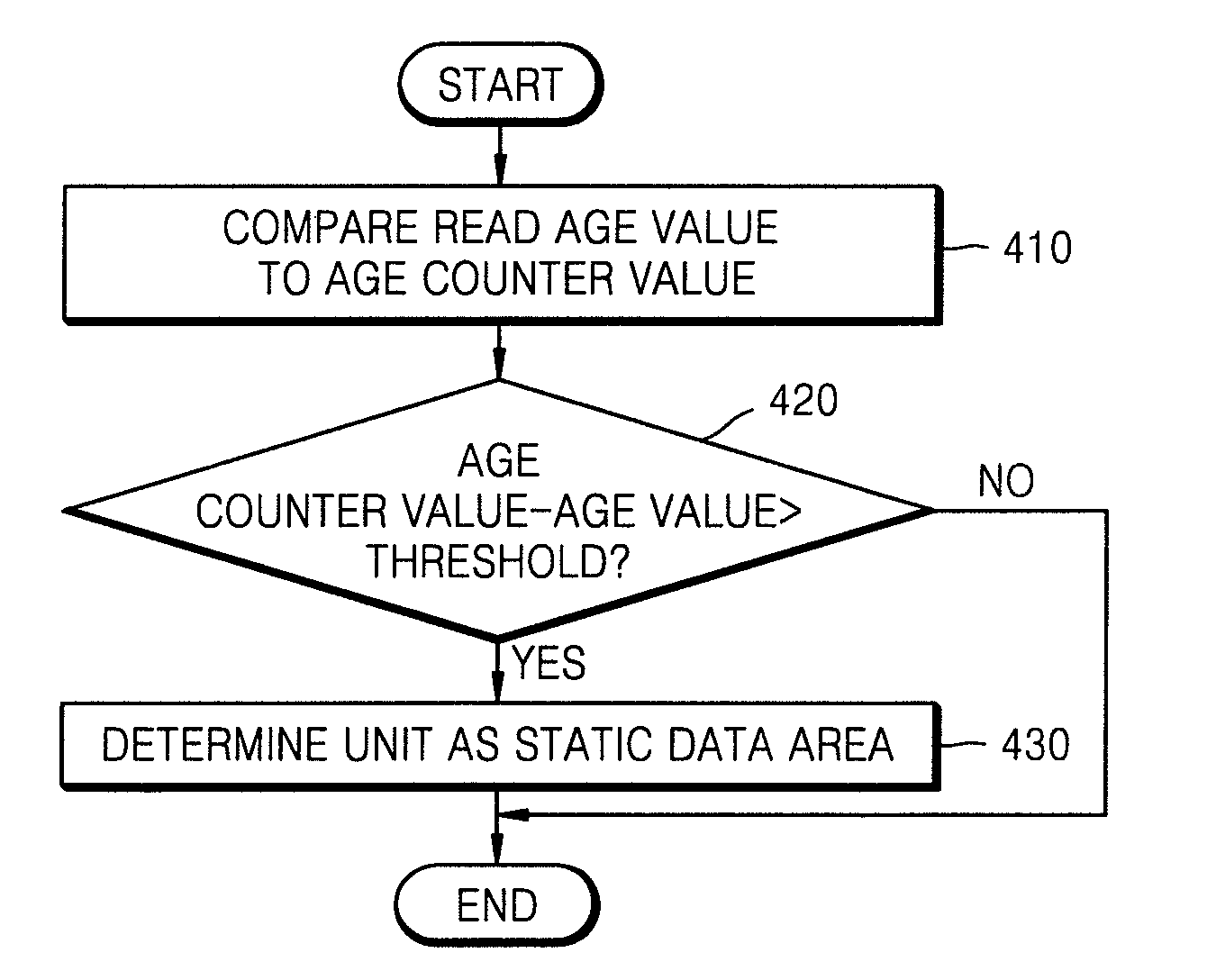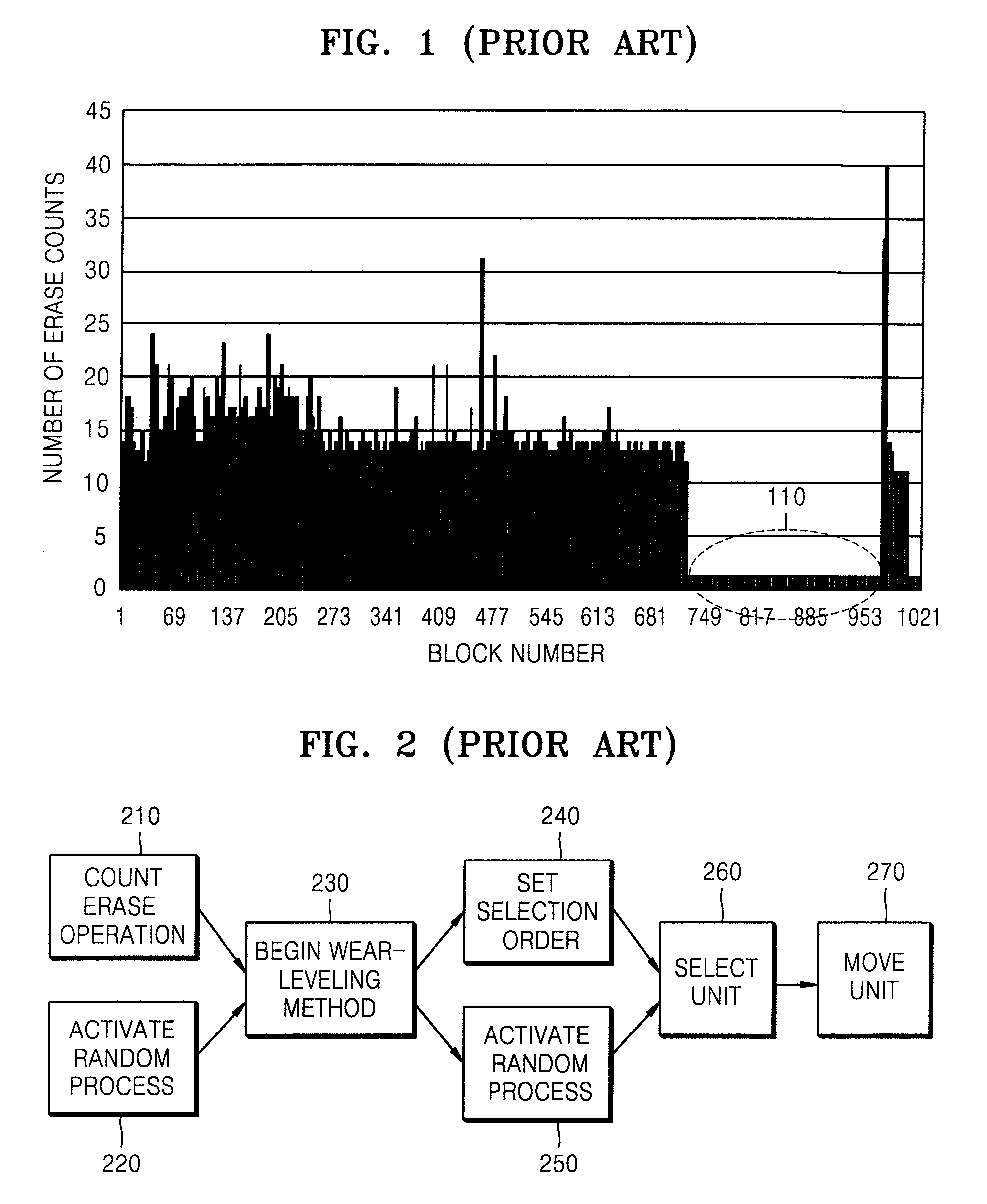Method and apparatus for detecting static data area, wear-leveling, and merging data units in nonvolatile data storage device
a non-volatile data storage and data area technology, applied in the direction of digital storage, memory adressing/allocation/relocation, instruments, etc., can solve the problem of double the computational overhead of the block map table, the speed of flash memory programming (write) speed, and the rapid decrease of the lifetime of the entire memory. achieve the effect of accurately detecting a static data area and wearing leveling
- Summary
- Abstract
- Description
- Claims
- Application Information
AI Technical Summary
Benefits of technology
Problems solved by technology
Method used
Image
Examples
Embodiment Construction
[0067]Hereinafter, preferred embodiments of the present invention will be explained in detail with reference to the attached drawings. Although a flash memory is described hereinafter, the description can be applied to all nonvolatile data storage devices.
[0068]FIG. 3 is a flowchart of a method of detecting a static data area in a nonvolatile data storage device according to an embodiment of the present invention.
[0069]Referring to FIG. 3, an age value is stored in each data unit in operation 310. The data unit may be a data block of a flash memory.
[0070]The age value is a parameter indicating a write time, and one age value per data block is stored every time data is recorded with respect to all data blocks. That is, when data is recorded in a first page of a data block, an age value can be recorded in a spare area of the first page. Each page of a data block has a 16 or 64-byte spare area to record Error Correction Code (ECC) information and the like therein. Since an age value to...
PUM
 Login to View More
Login to View More Abstract
Description
Claims
Application Information
 Login to View More
Login to View More - R&D
- Intellectual Property
- Life Sciences
- Materials
- Tech Scout
- Unparalleled Data Quality
- Higher Quality Content
- 60% Fewer Hallucinations
Browse by: Latest US Patents, China's latest patents, Technical Efficacy Thesaurus, Application Domain, Technology Topic, Popular Technical Reports.
© 2025 PatSnap. All rights reserved.Legal|Privacy policy|Modern Slavery Act Transparency Statement|Sitemap|About US| Contact US: help@patsnap.com



